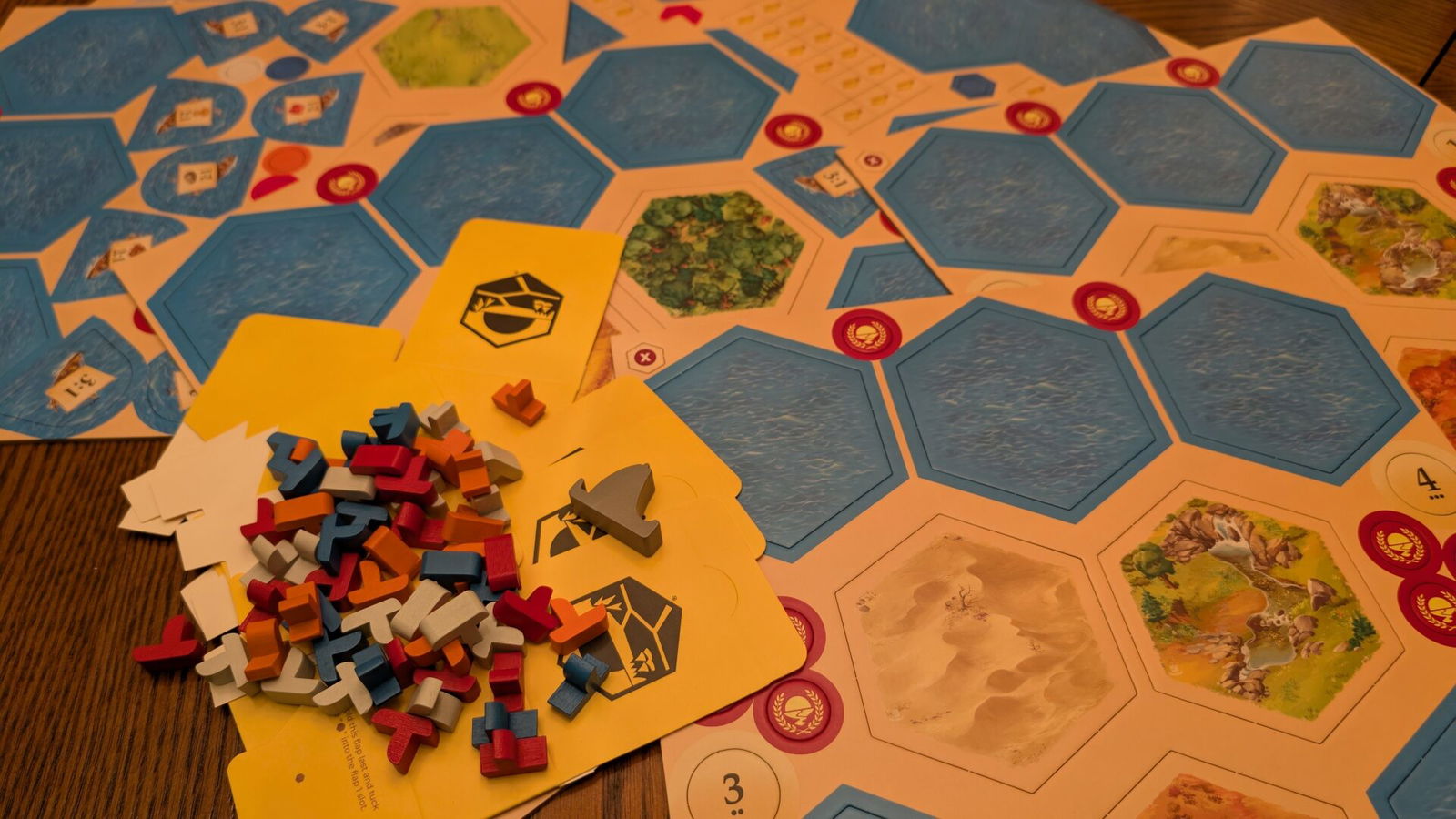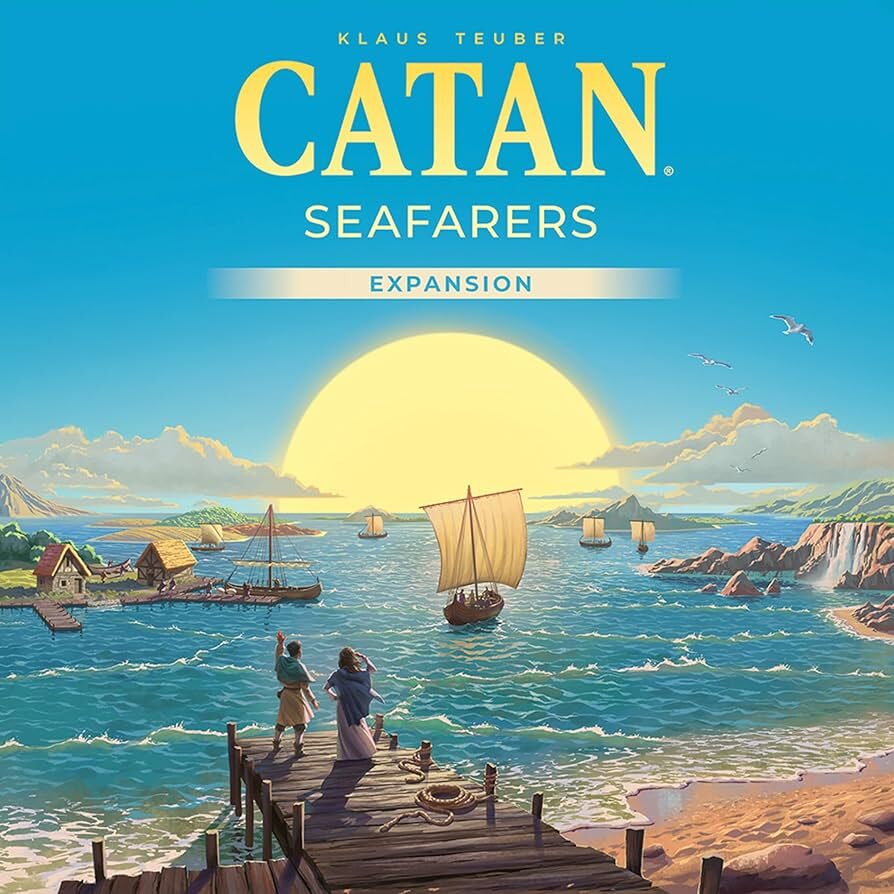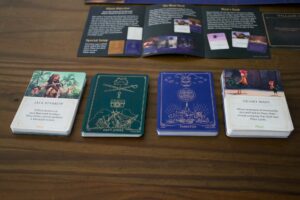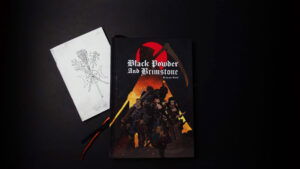Seasoned Catan players know that Catan: Seafarers is the first expansion released for the board game series. While most of the rules and visual elements in Catan: Seafarers (6th Edition) remain the same, there are several notable changes. Where the base game emphasizes building as many roads, settlements and cities as possible to win, this expansion highlights the importance of constructing ships.
The updated flavour text in Catan: Seafarers (6th Edition) reads: “Not everyone’s content with a simple life on the shore. You? Your restless spirit cannot resist the call of the open sea! While your hometown grows and thrives, you and your rival Seafarers seek new thrills, planting fresh roots and building spectacular wonders on smaller islands in the Catanian archipelago. The rumors of gold and resources are so alluring that not even pirates, dense fog, or rough waters will keep you from your goal. Set sail into the unknown and chart your own course of discovery!”
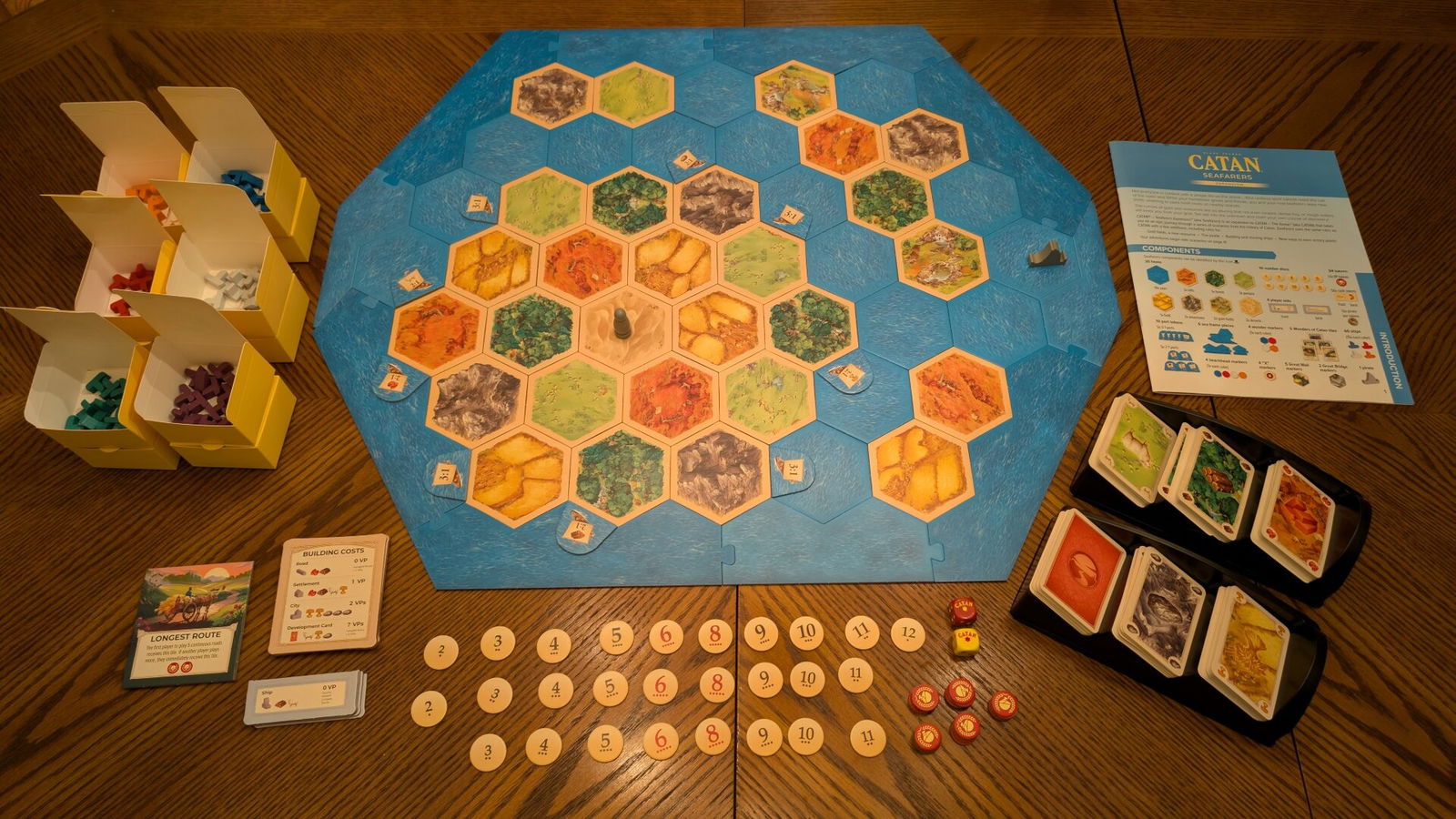
For those jumping into the Catan series today, this new edition still requires players to own the base Catan (6th Edition). While it’s technically possible to mix editions, some markers and player aids may differ slightly. This expansion adds new elements such as ships, the pirate, new gold hex fields, cloth tokens and the ability to build wonders in Seafarers.
“Catan: Seafarers (6th Edition) offers some welcome upgrades in storage and artwork, but still requires refinement.”
Seafarers adds nine map setups, with eight detailed scenarios that enhance the game’s replayability. The scenarios in this extended campaign offer a mix of challenges and opportunities for players to explore. The rules in Catan: Seafarers (6th Edition) outline every map setup, ruleset and victory condition with concise detail that avoids overwhelming players with the new mechanics.
The most significant distinction in Seafarers is the introduction of a new resource tile: gold fields. No, this doesn’t add gold to the game. Instead, each player with a settlement on a gold field hex that produces on a turn receives one resource card of their choice—brick, wood, wool, wheat or ore.
Another major addition to the Catan: Seafarers 6th Edition expansion is the building and use of ships. Ships can be built with 1 wood and 1 wool, and are placed on the empty edges of sea hexes.
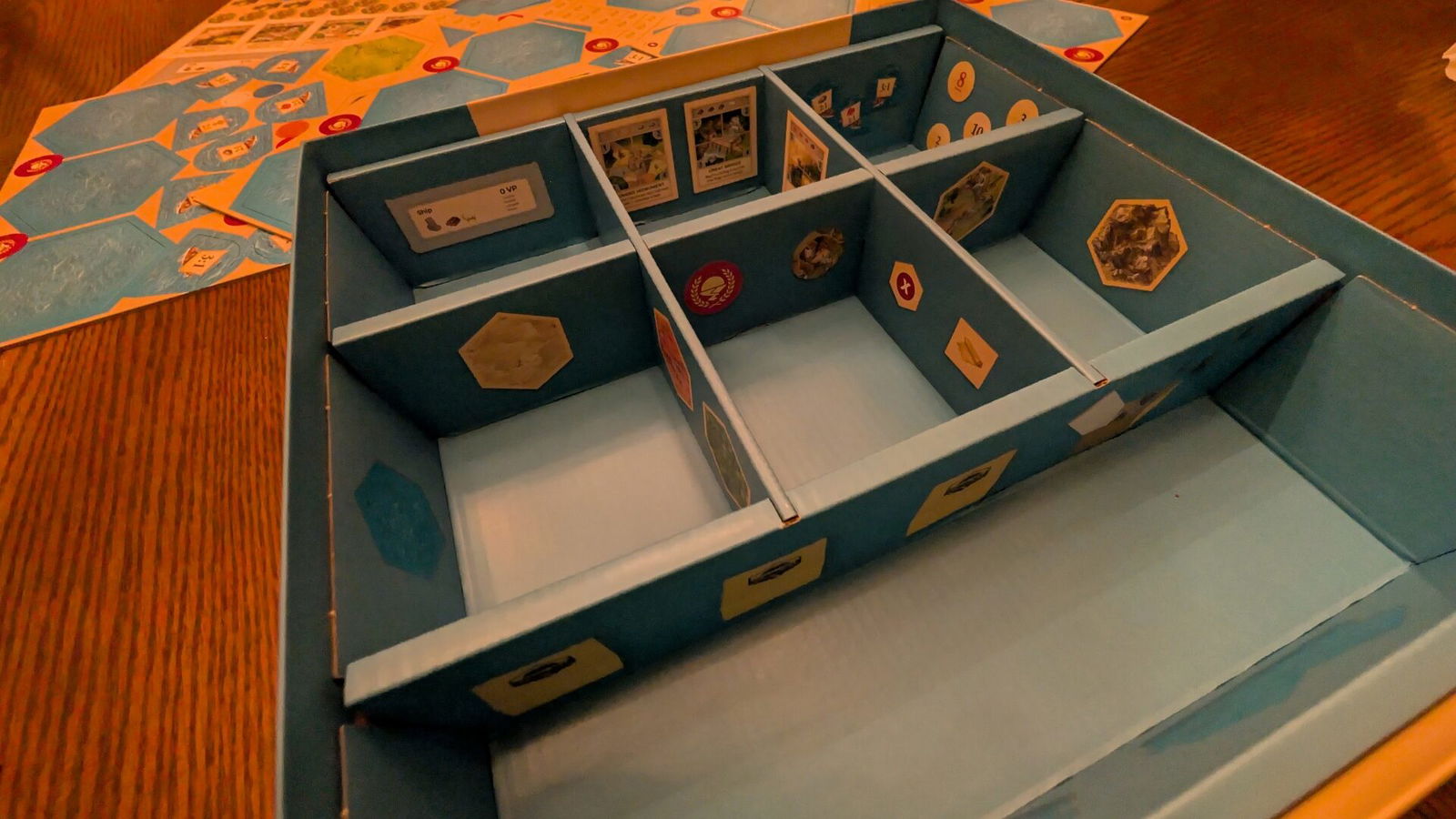
Here is a list of components found in the Catan: Seafarers 6th Edition box:
- 30 hexes
- 6 sea frame pieces
- 10 number discs
- 50 cloth tokens
- 32 Victory Point tokens
- 4 “X” markers
- 4 beachhead markers
- 10 port tokens
- 4 player aids
- 60 ships
- 1 pirate
- 5 Wonders of Catan tiles
- 5 Great Wall markers
- 2 Great Bridge markers
- 12 pirate lair tokens
- 4 wonder markers
In terms of storage management, this new edition of Seafarers is a step up from the previous version—especially with each player receiving their own individual yellow box. The issue with the yellow boxes, however, is that they could be labelled more clearly than in the base set so players can easily distinguish which pieces belong to the Seafarers expansion and which are from the core game.
Another potential storage improvement for the updated 6th Edition would be for Catan Studio to include more effective compartment dividers—or to improve the existing ones. As someone who prefers to keep components separated, dumping cloth tokens, victory point tokens, scenario markers and port tokens all into a single compartment feels unnecessarily messy.
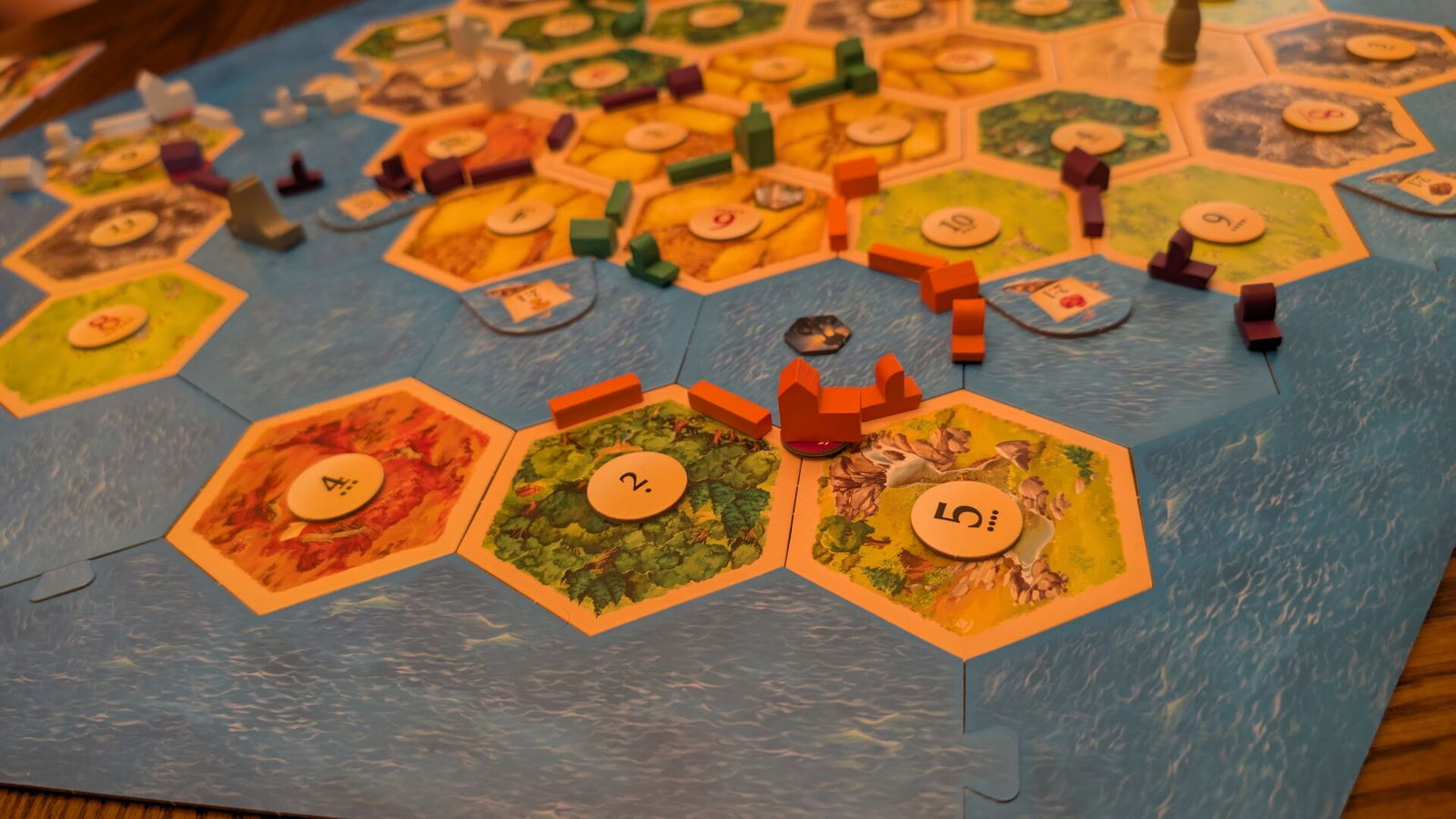
For our gameplay, I playtested three scenarios: Heading for New Shores, The Forgotten Tribe and Through the Desert. The rulebook recommends playing with the fixed setup for the most balanced experience, so we followed that guidance. We also used the new paired player rules, which replace the special build phase for five or six players. My playtest group and I agreed that the ship movement rules were surprisingly clearer in the fifth edition version of Seafarers.
The sixth edition needs at least two illustrations and requires the last point in the ship moving explanation from the fifth edition. The fifth edition rules states: “ You may only move a ship where one of its two ends is not adjacent to any of your other pieces. In Illustration D, the ships outlined in white can move. So, none of the orange ships can move. Three of the red ships, and only one of the blue ships can move.” This whole explanation is missing in the sixth edition.
“While the expansion looks more polished, it doesn’t offer many meaningful improvements over the fifth edition.”
The best part of Catan: Seafarers (5th Edition)’s illustration in this section is how it shows three different examples, whereas Catan: Seafarers (6th Edition) only includes one example of varying ship placements. Some of the newer players in our playtest were confused by the sixth edition’s terminology and example photos. When I showed them the fifth edition rules, they understood the ship movement mechanics much more clearly.
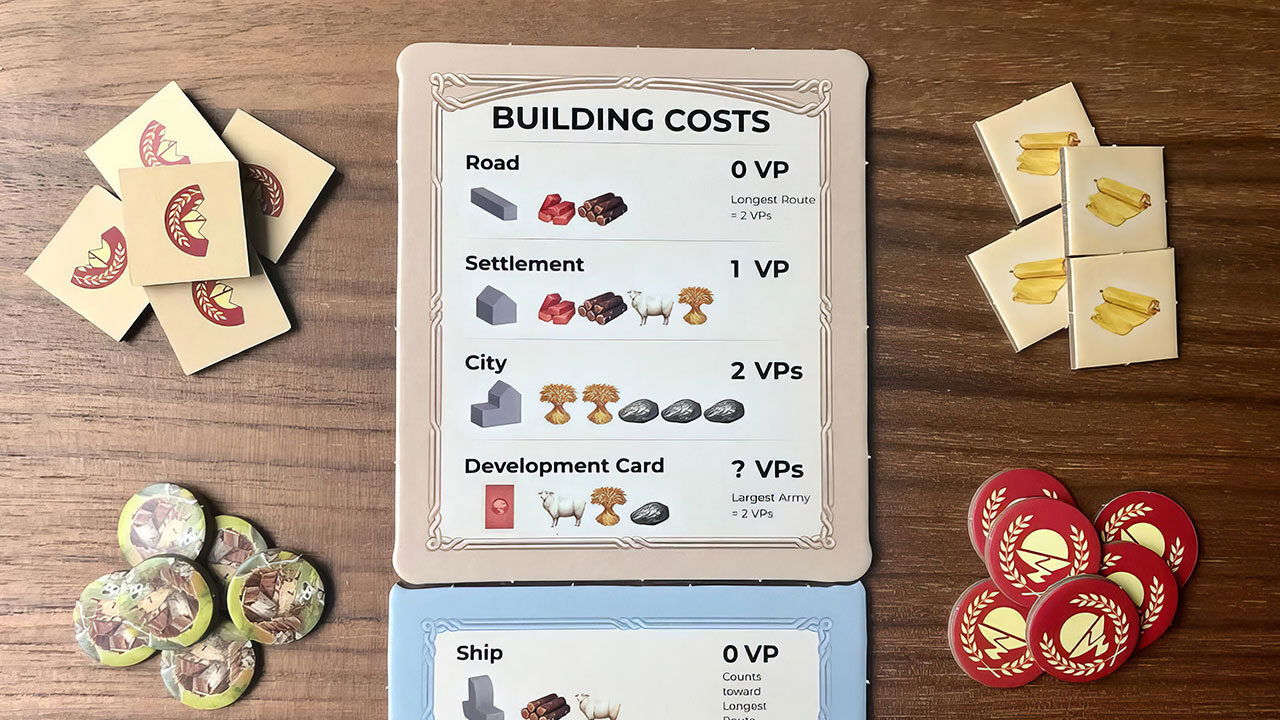
While Heading for New Shores doesn’t feature many changes from the previous edition, the variable setup differs from the sixth edition base set. In the sixth edition, variable rules typically follow the standard four-player spiral layout for number discs. In Catan: Seafarers (6th Edition), the main land islands are randomized, while the smaller islands are now preset. Previously, those smaller hexes included some variable aspects, but that is no longer the case—perhaps to streamline gameplay for newer players. This could be adjusted as a house rule in future sessions.
As for The Forgotten Tribe and Through the Desert, this is where the use of ships felt essential. The smaller islands offered more incentive to build settlements or visit them to collect Development Cards and Victory Point tokens. Additionally, players could extend their longest route using roads and ships in a continuous line, adding more strategy to the placement of structures.
Catan: Seafarers (6th Edition) offers some welcome upgrades in storage and artwork, but still requires refinement. The rulebook would benefit from incorporating elements that worked better in the previous edition. Unfortunately, while this version looks more polished, it doesn’t offer many meaningful improvements over the fifth edition.
